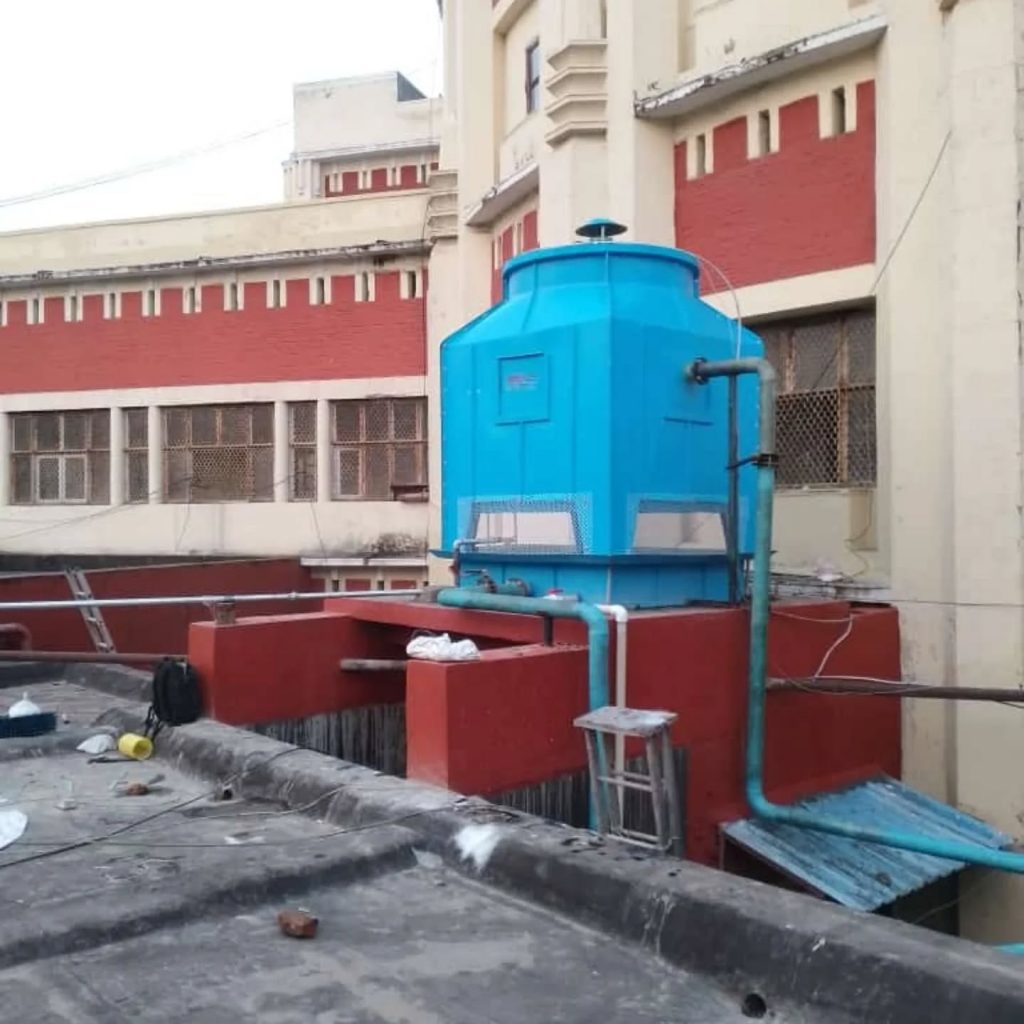Use of Cooling Tower in Power Plant
The use of cooling towers in power plants is fundamental and massive in scale. They are a critical component for the vast majority of thermal power plants, which include fossil fuel (coal, natural gas) and nuclear facilities.
Their primary purpose is to reject waste heat to the atmosphere, a necessary step for maintaining the efficiency and operability of the power cycle.
The Core Principle: The Rankine Cycle and the Need for a “Cold Sink”
Most power plants generate electricity by spinning a turbine. They do this by creating high-pressure steam, which expands through the turbine blades. For this cycle to be efficient and continuous, the steam must be condensed back into water (condensate) to be pumped back to the boiler and turned into steam again.
This is where the cooling tower comes in. It provides the cold sink required to condense the steam.
The Simple Sequence:
- Steam does its work spinning the turbine.
- The now low-energy steam exits the turbine and enters the condenser.
- The condenser is a giant heat exchanger. Cool water from the cooling tower is pumped through thousands of tubes inside it.
- The exhaust steam comes into contact with the cold tubes and condenses back into water.
- In the process, the cooling water absorbs the waste heat from the steam and becomes hot.
- This hot water is then pumped to the cooling tower to be cooled down.
- The cooled water is sent back to the condenser to repeat the cycle.
This process is the heart of a thermal power plant’s operation. Without effective cooling to condense the steam, the pressure drop across the turbine would be lost, and the cycle would stop.
Why Cooling Towers are Used: Efficiency and Environmental Impact
Power plants need to reject a staggering amount of heat. A typical large nuclear power plant must reject heat equivalent to the energy usage of a medium-sized city. There are two main ways to do this:
- Once-Through Cooling: Pumping vast amounts of water from a river, lake, or ocean, using it to cool the condenser, and discharging the warm water back to the source.
- Problem: This is environmentally damaging (thermal pollution harms aquatic life) and is heavily restricted or banned in many areas. It also requires a massive, reliable water source right next to the plant.
- Recirculating (Closed-Cycle) Cooling: This is where cooling towers are used. They recirculate the same water, cooling it evaporatively and only requiring a relatively small amount of “make-up” water to compensate for what is lost to evaporation and blowdown.
- Advantage: Reduces water withdrawal from the source by 95-98% compared to once-through systems. It minimizes thermal pollution and allows plants to be built in locations without enormous water bodies.
